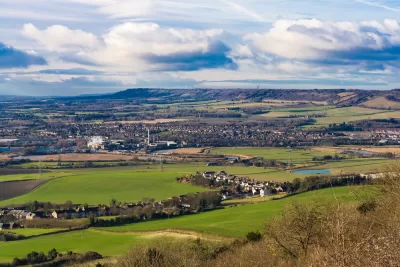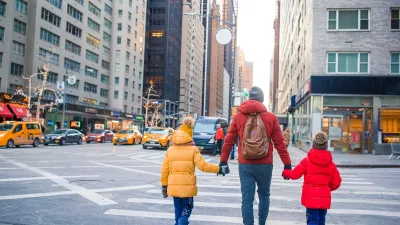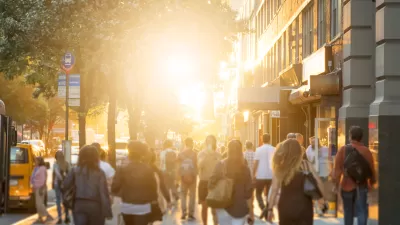Touted as a solution to mindless suburban expansion, the vast green belts around U.K. cities create new challenges. Among them: less affordable housing, longer commutes, and dubious environmental benefits. What happens if these spaces get developed?

A traveler out of London passes miles of suburbs that give way to rolling meadows, hedgerows, country churches, and sheep. This happens fairly quickly. The U.K. has remained relatively light on sprawl due to the green belts around its major cities, great swaths of classic countryside kept free from new development “except in very special circumstances.”
Despite its advantages, the green belt comes with some nasty side effects. As Rowan Moore observes, the green belt contributes to a lack of quality housing, lengthens commutes, and provides little access to city residents. The green belt is too close to the city to preserve the character of rural Britain, and not finely-tuned enough to serve citizens as a park. Its residents are seen as affluent gentry who rig the real estate market in their favor.
Continuing policy protects green belt status unilaterally. From the article: “[The green belt is] part of English, if not British, national identity, protected by the shade of William Blake. It is brandished at party conferences and makes tabloid headlines, with frequent references to the ‘concreting over’ of a green and pleasant land.”
Moore outlines an ongoing debate between green belt supporters and its detractors, some of whom desire large-scale development of the land in question. The article advocates a middle road between wholesale development and the current protectionist policy. Of calls to rescind the green belt, Moore writes, “Something more is required, which is the ability to plan positively, to create new places as well as protect old ones, a skill this country had until relatively recently.”
FULL STORY: Is it time to rethink Britain's green belt?

Alabama: Trump Terminates Settlements for Black Communities Harmed By Raw Sewage
Trump deemed the landmark civil rights agreement “illegal DEI and environmental justice policy.”

Planetizen Federal Action Tracker
A weekly monitor of how Trump’s orders and actions are impacting planners and planning in America.

Why Should We Subsidize Public Transportation?
Many public transit agencies face financial stress due to rising costs, declining fare revenue, and declining subsidies. Transit advocates must provide a strong business case for increasing public transit funding.

Understanding Road Diets
An explainer from Momentum highlights the advantages of reducing vehicle lanes in favor of more bike, transit, and pedestrian infrastructure.

New California Law Regulates Warehouse Pollution
A new law tightens building and emissions regulations for large distribution warehouses to mitigate air pollution and traffic in surrounding communities.

Phoenix Announces Opening Date for Light Rail Extension
The South Central extension will connect South Phoenix to downtown and other major hubs starting on June 7.
Urban Design for Planners 1: Software Tools
This six-course series explores essential urban design concepts using open source software and equips planners with the tools they need to participate fully in the urban design process.
Planning for Universal Design
Learn the tools for implementing Universal Design in planning regulations.
Caltrans
Smith Gee Studio
Institute for Housing and Urban Development Studies (IHS)
City of Grandview
Harvard GSD Executive Education
Toledo-Lucas County Plan Commissions
Salt Lake City
NYU Wagner Graduate School of Public Service





























